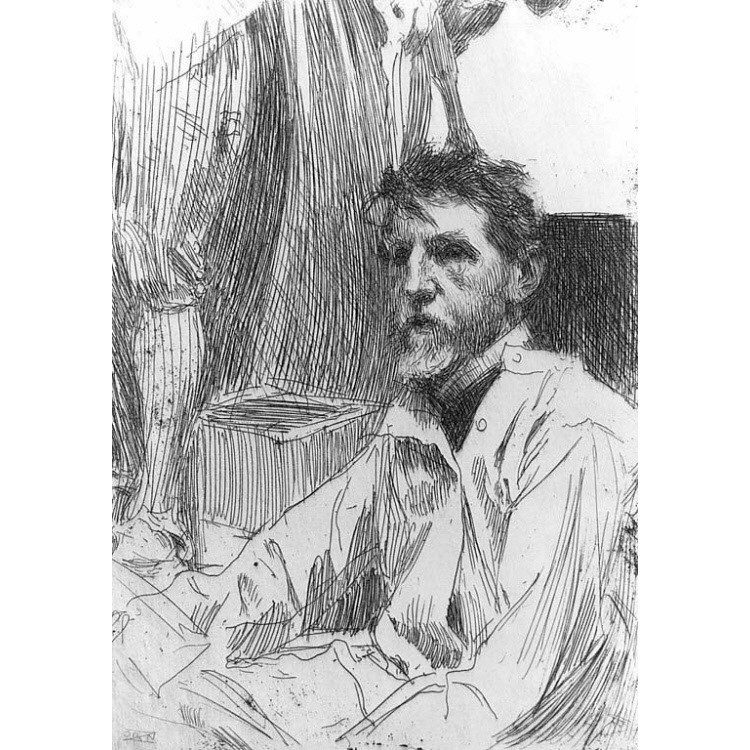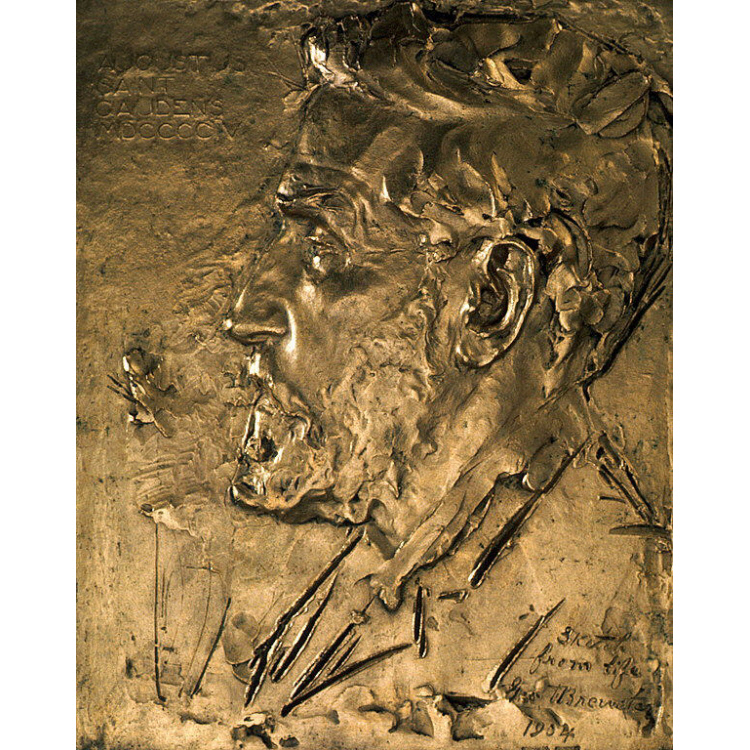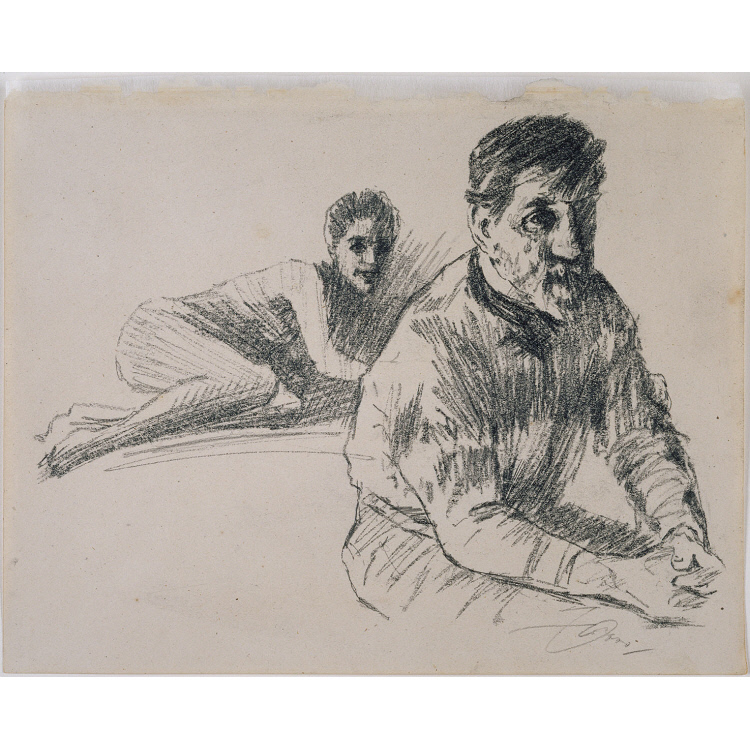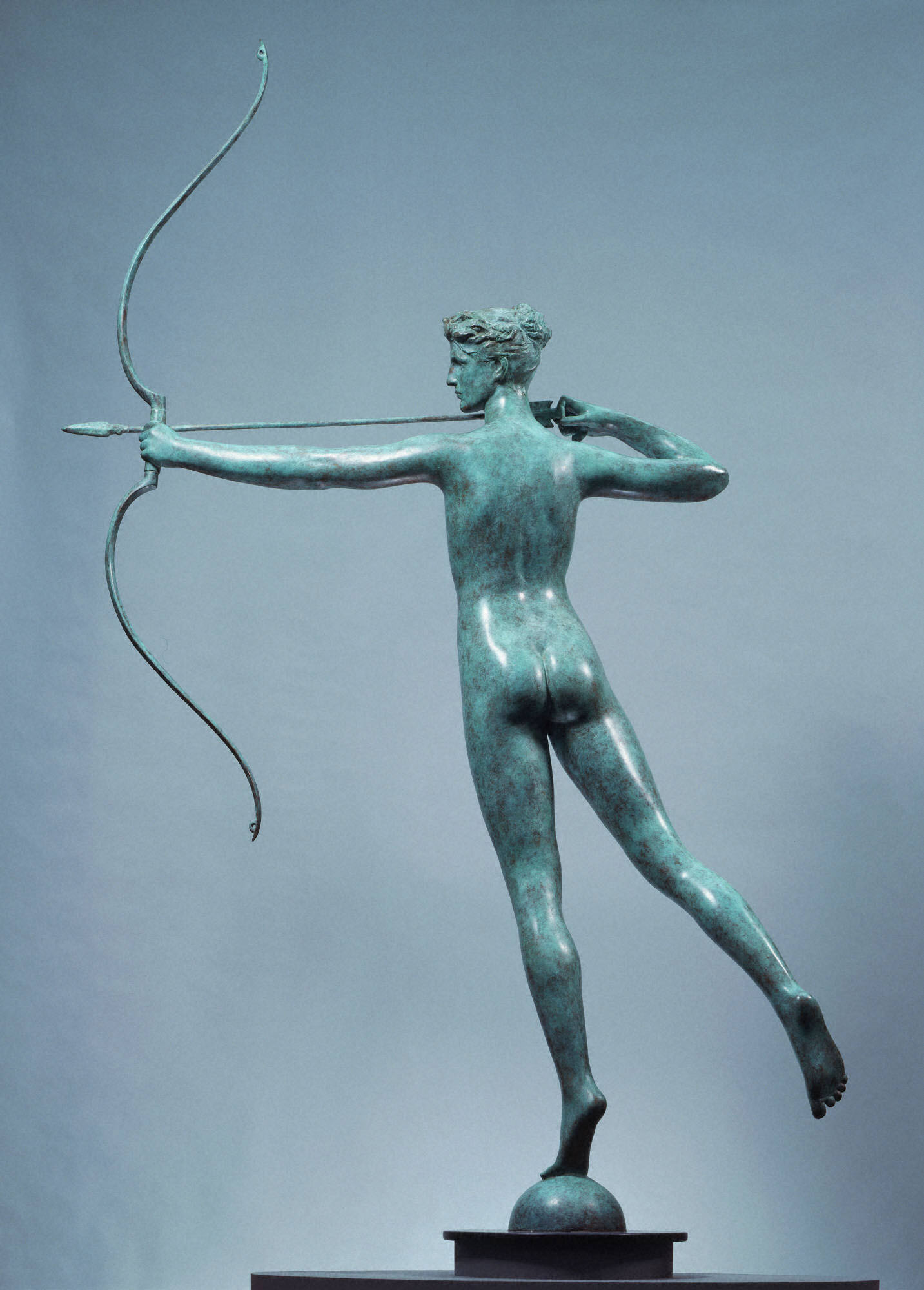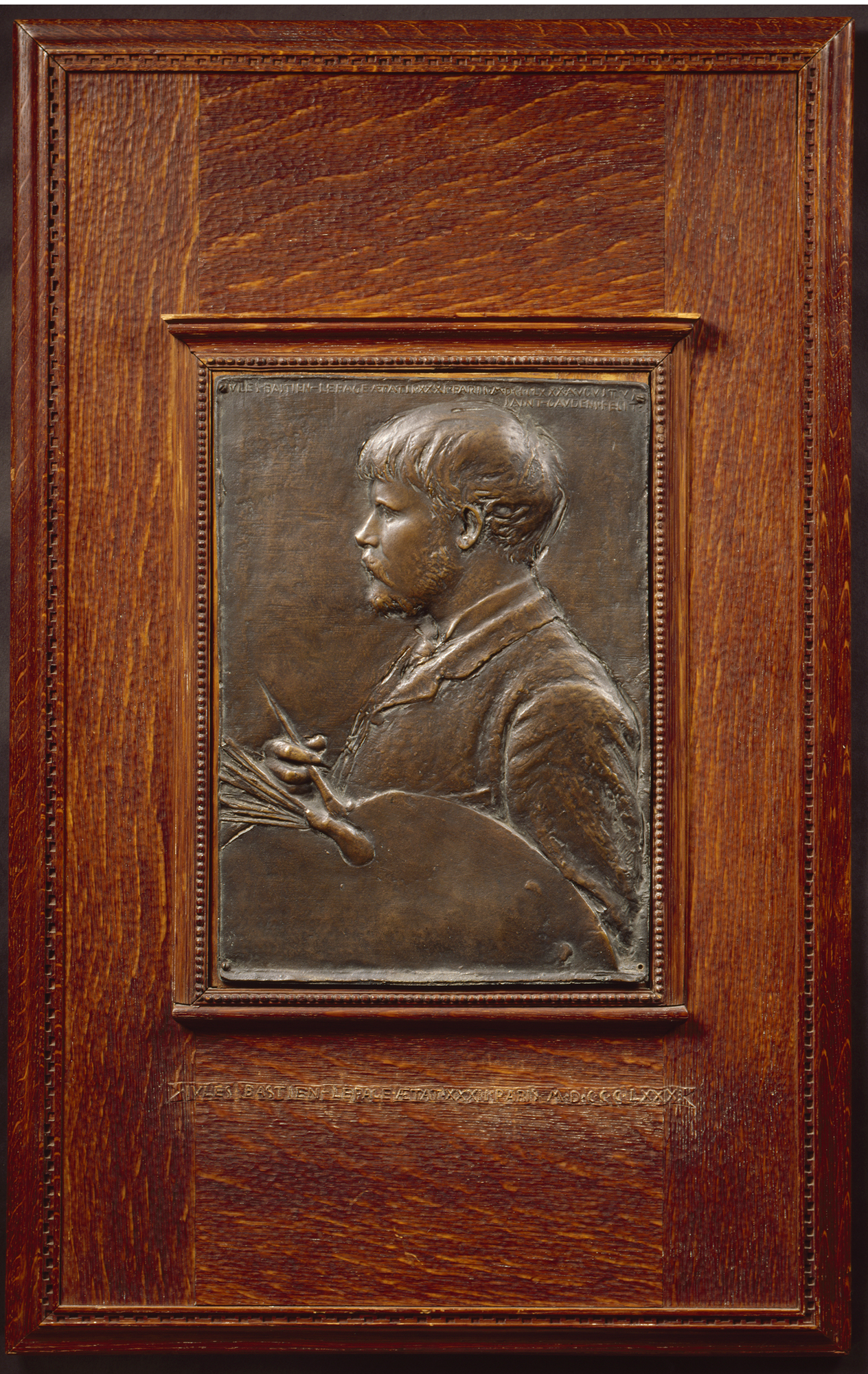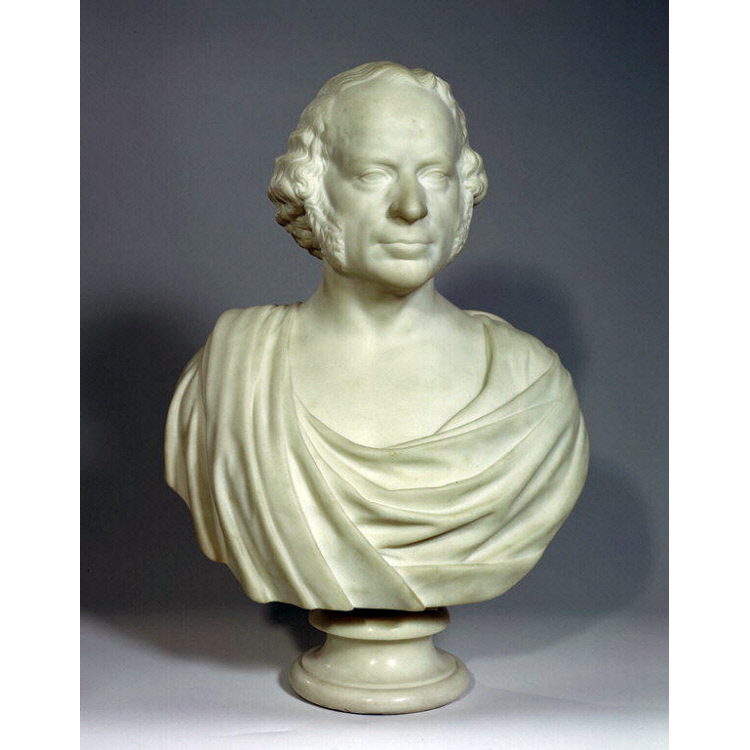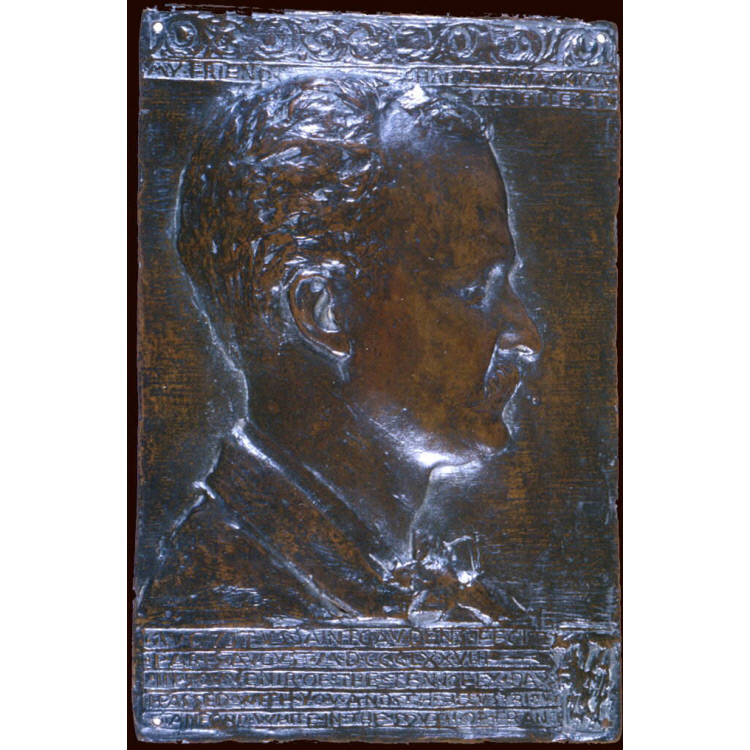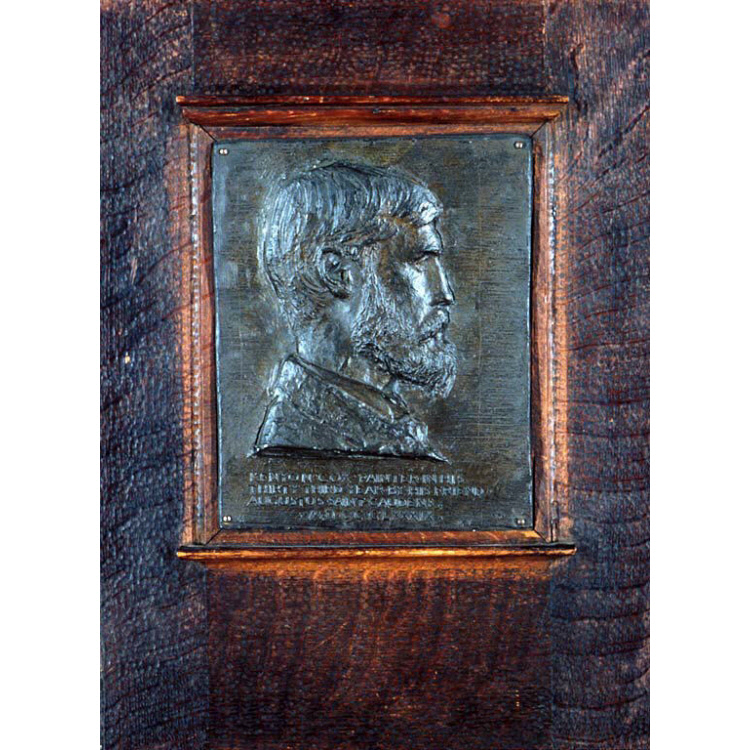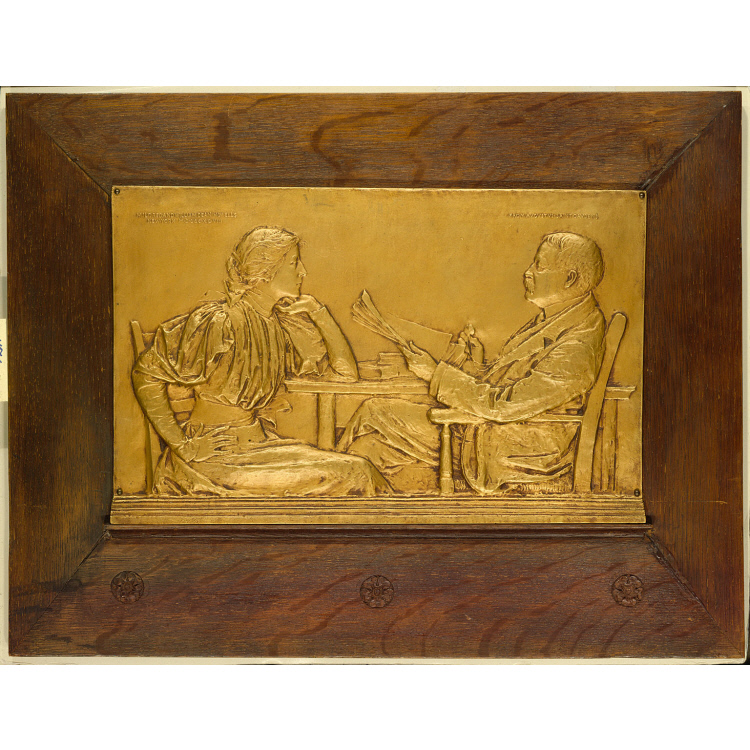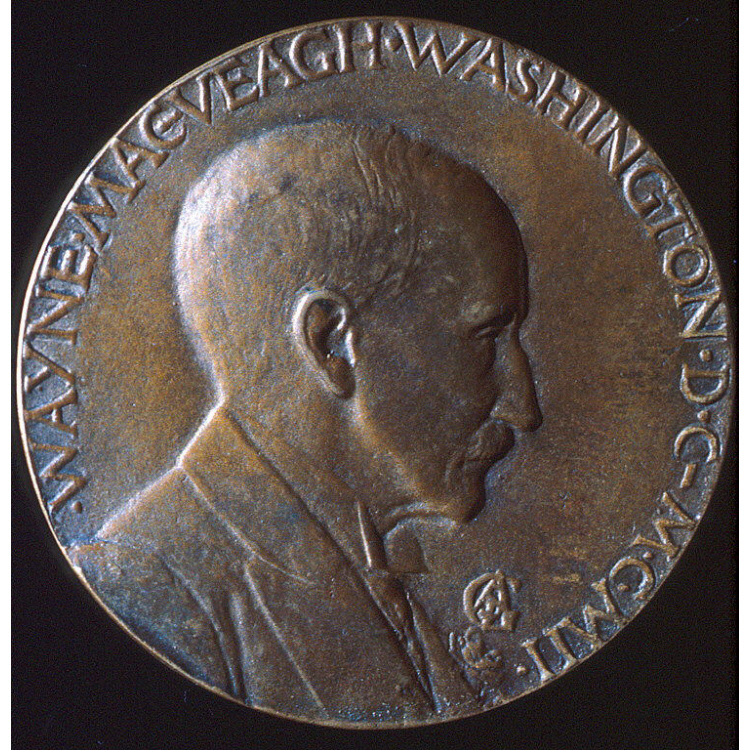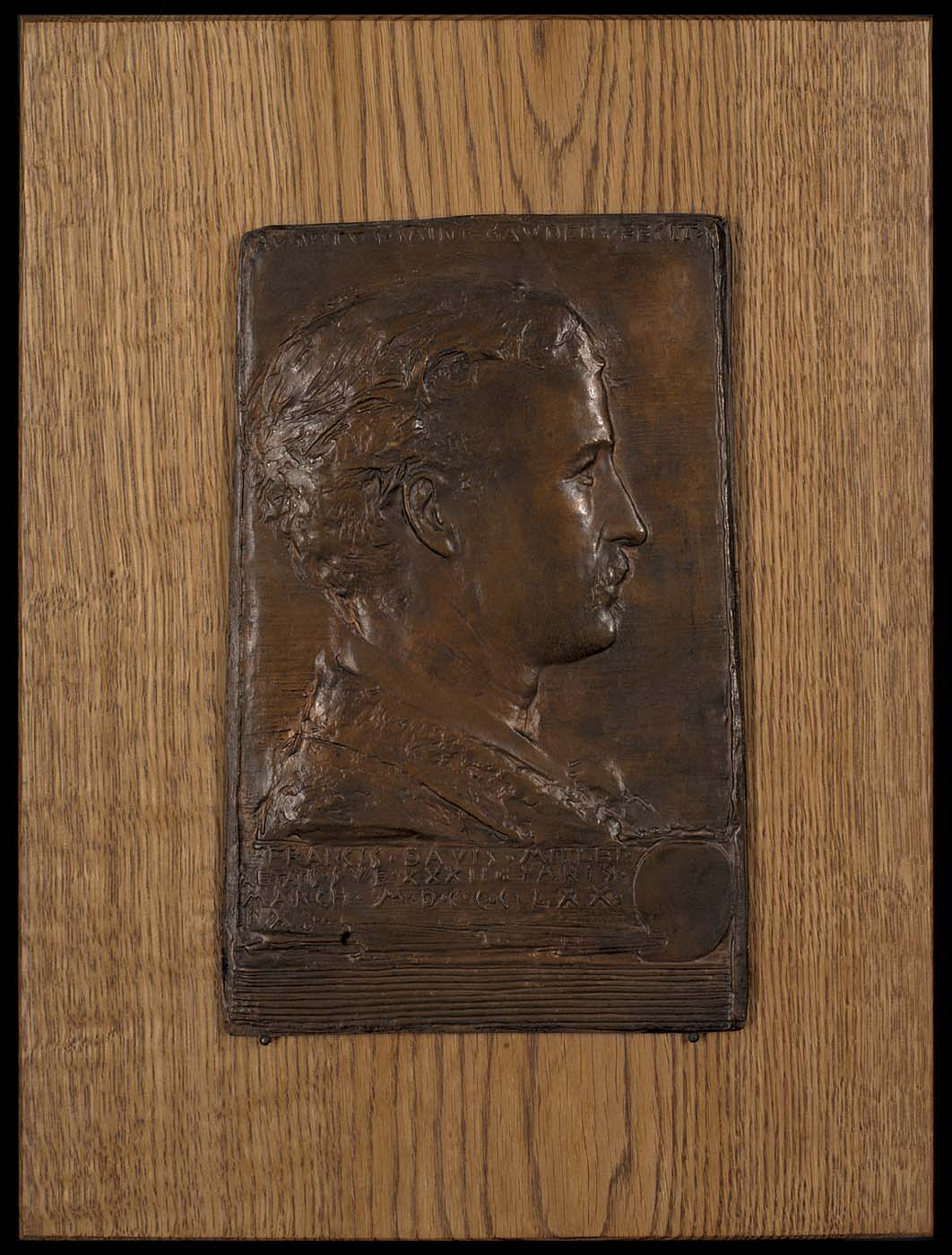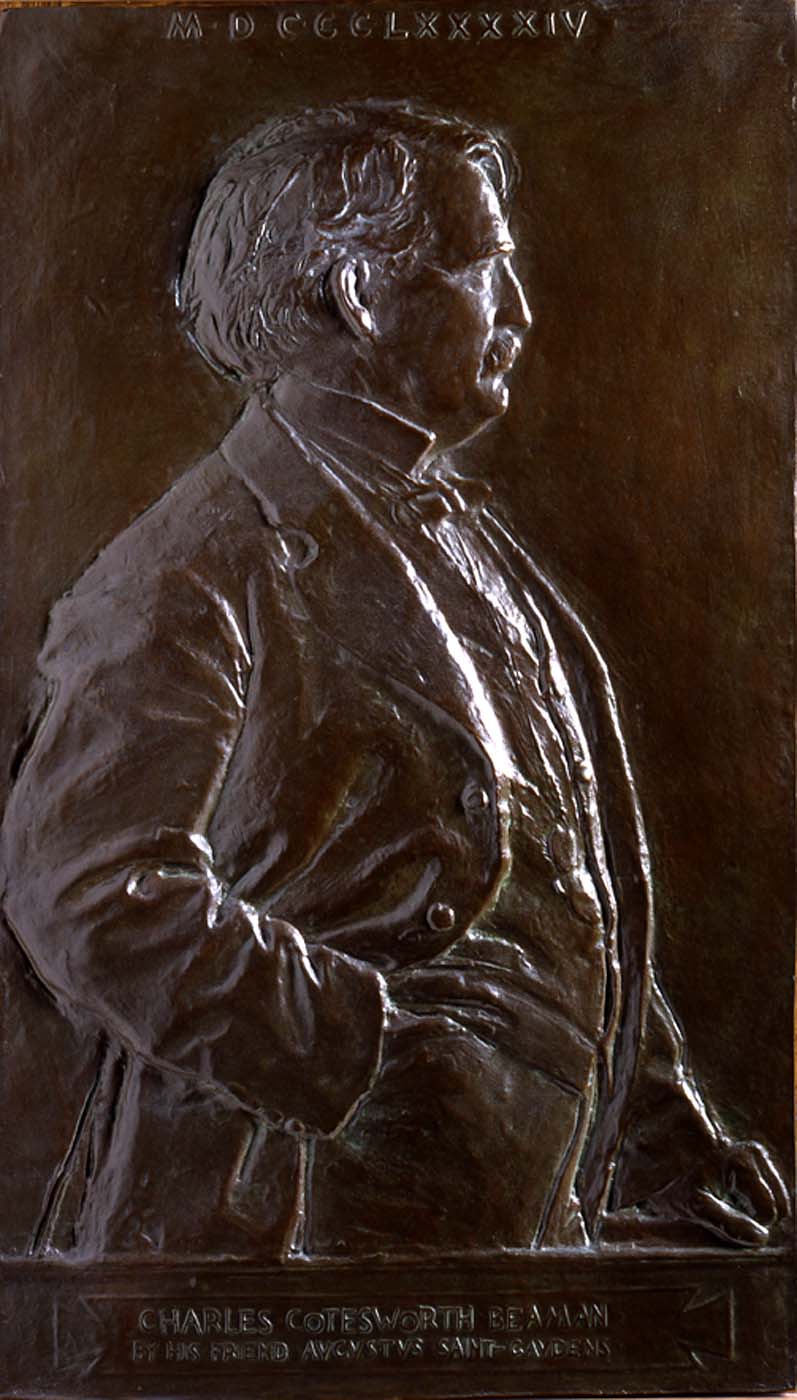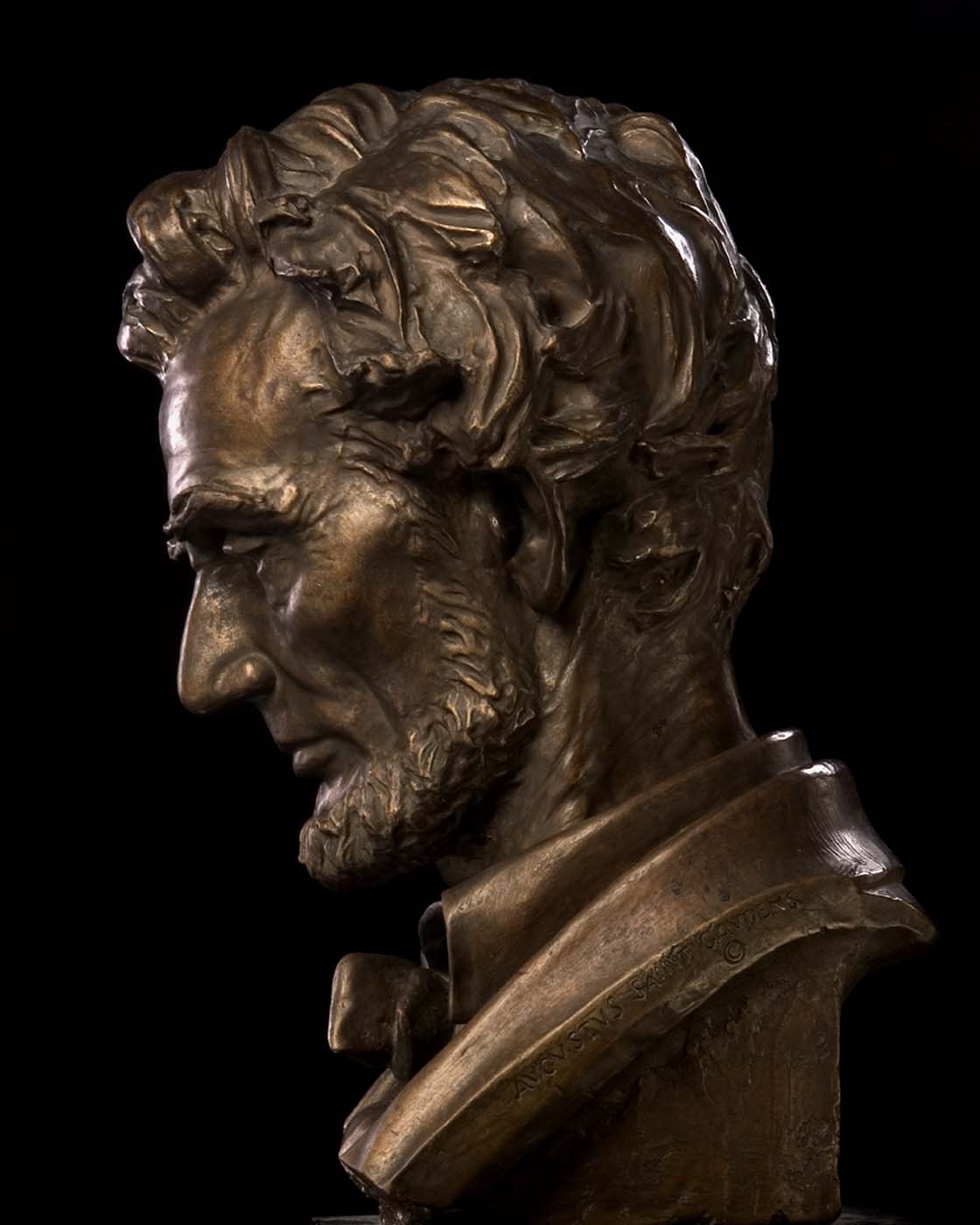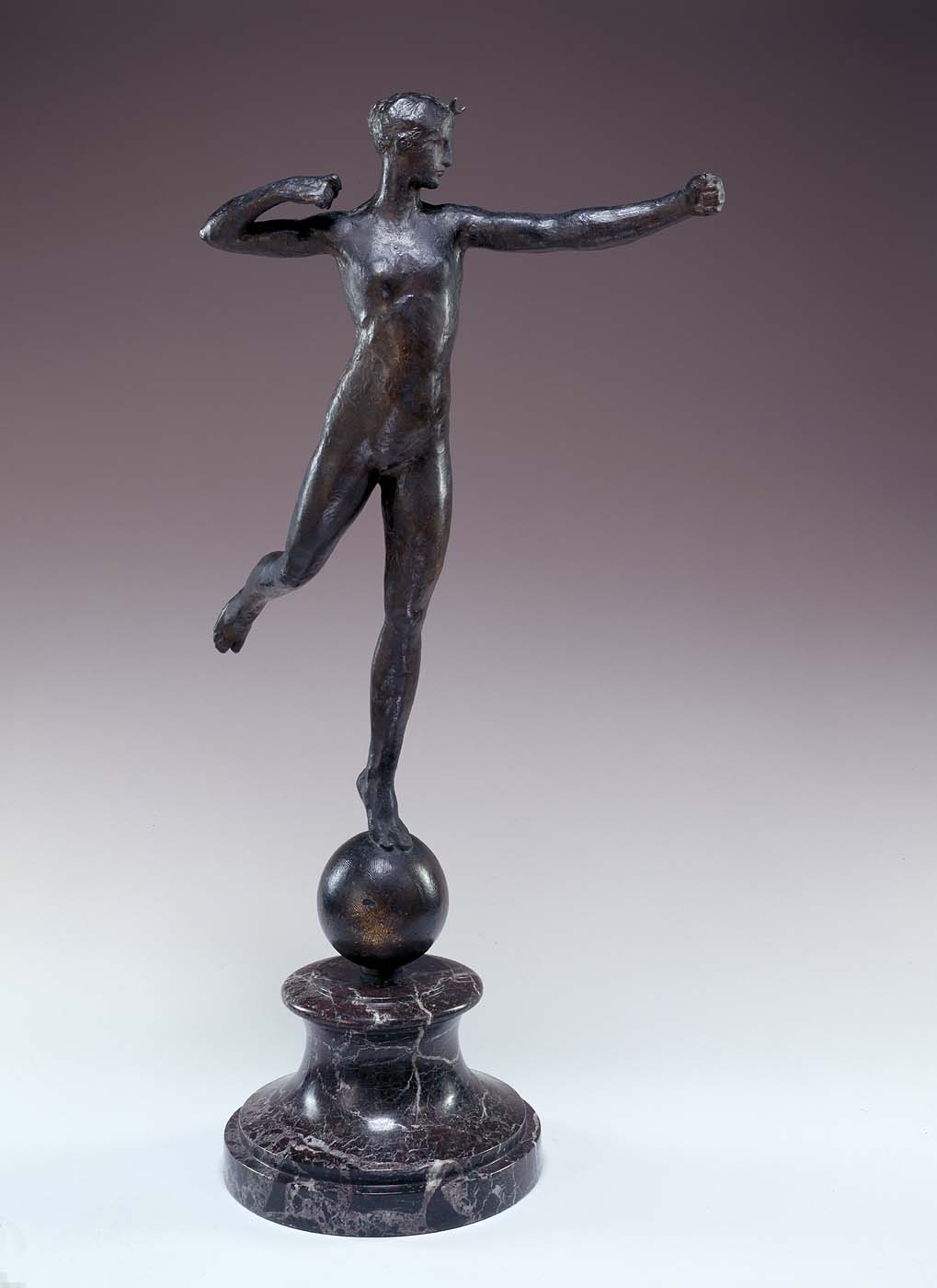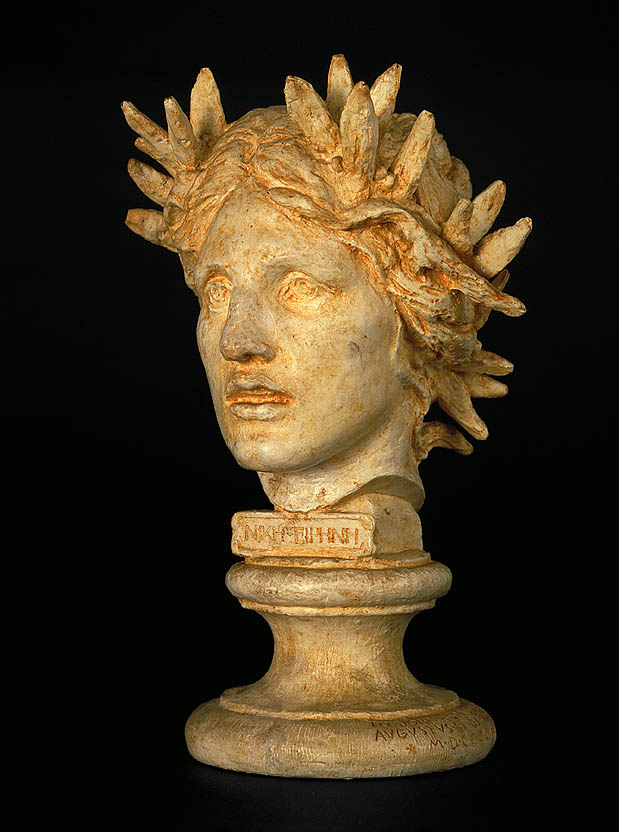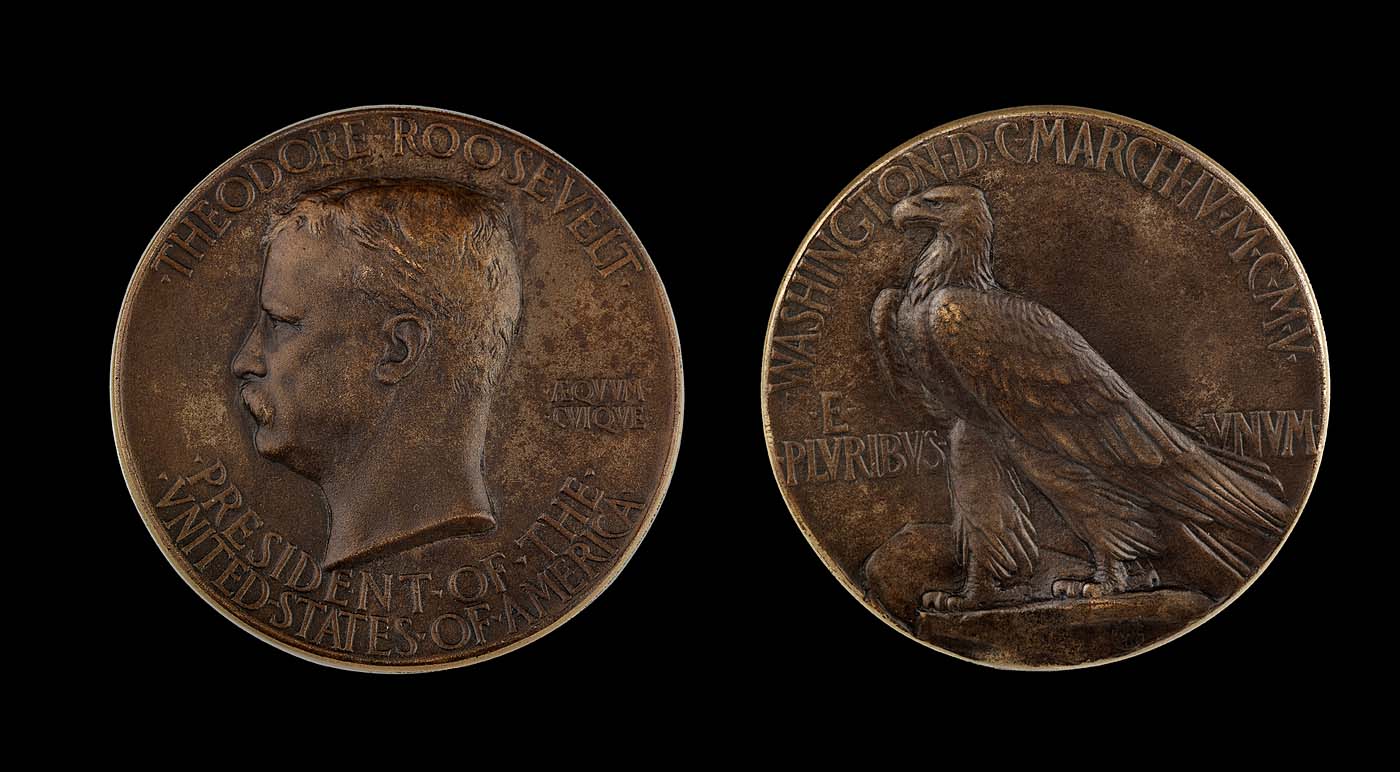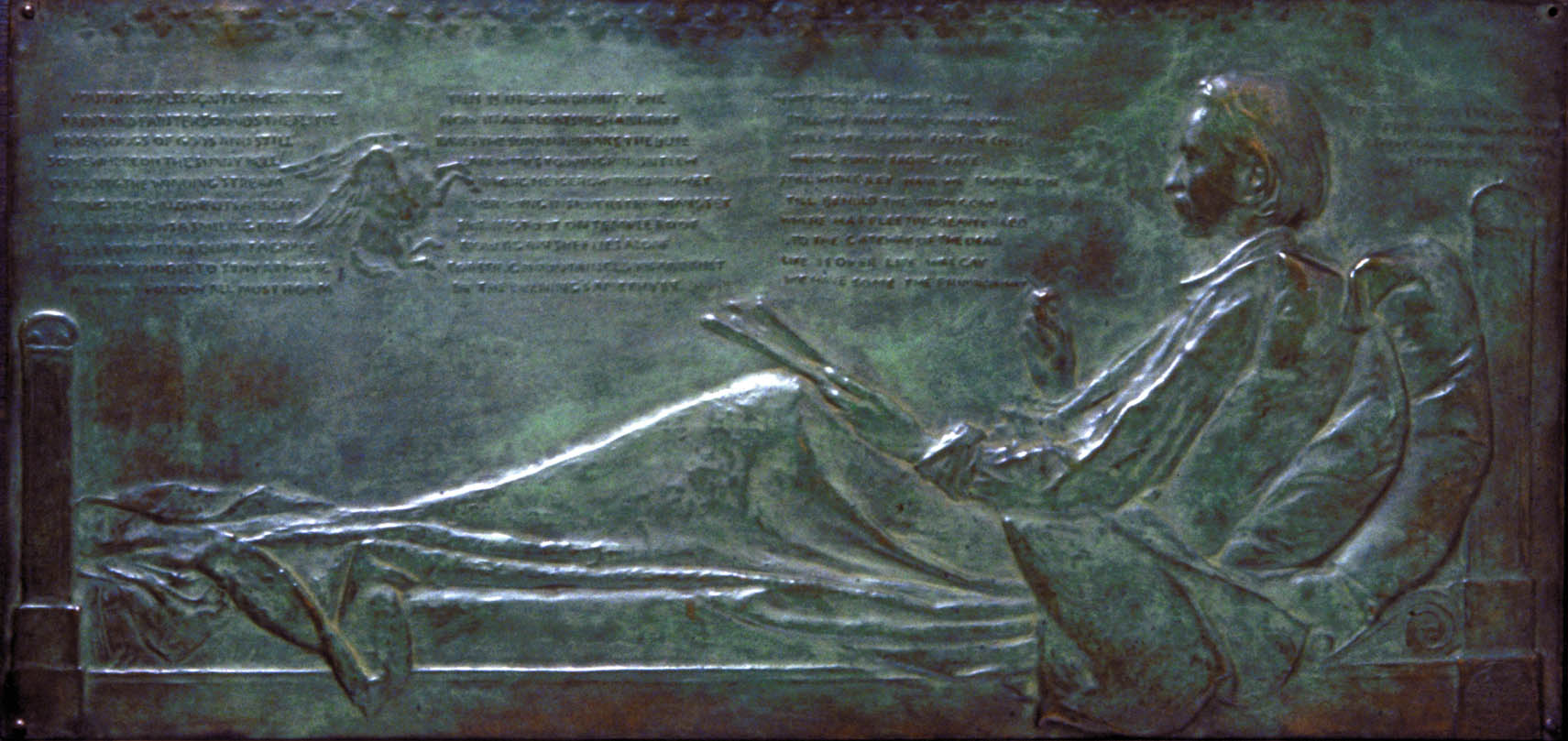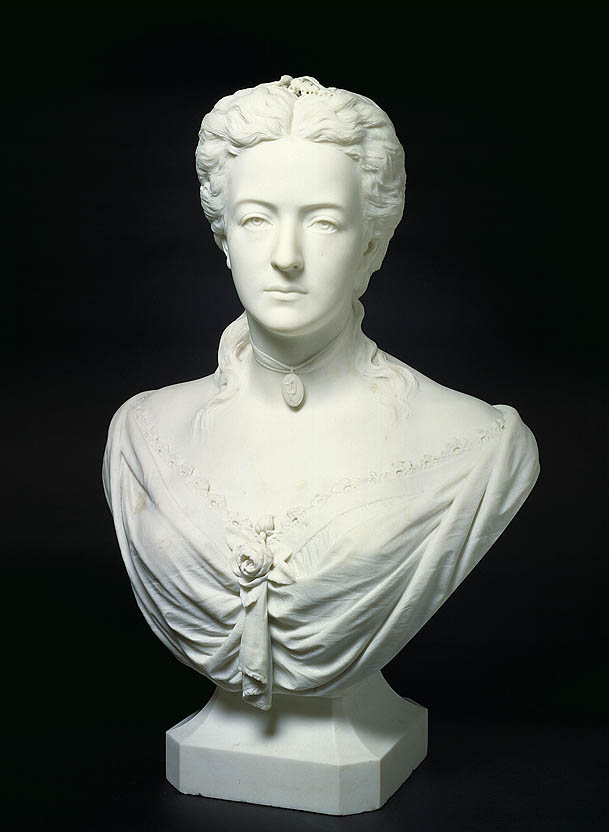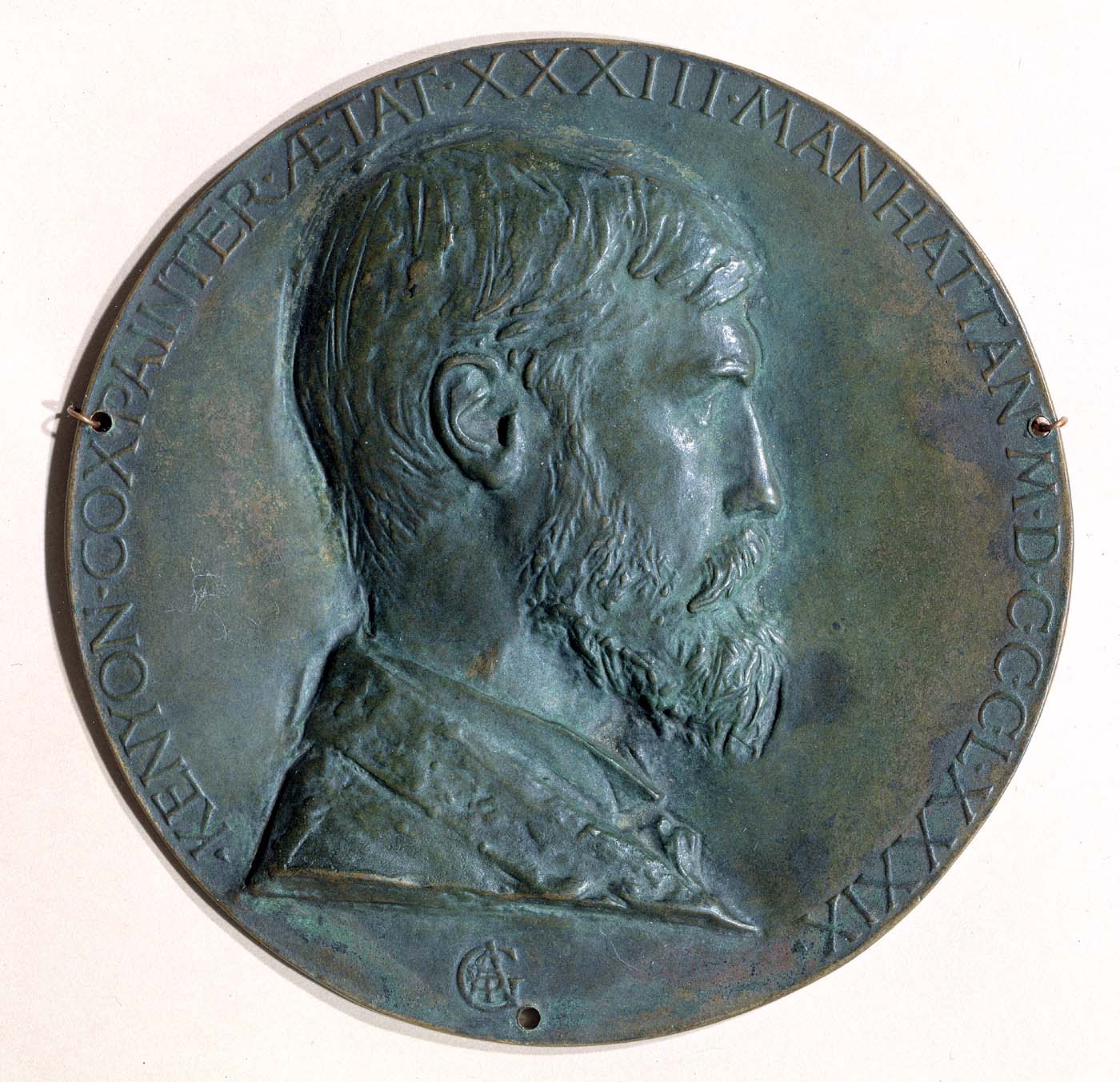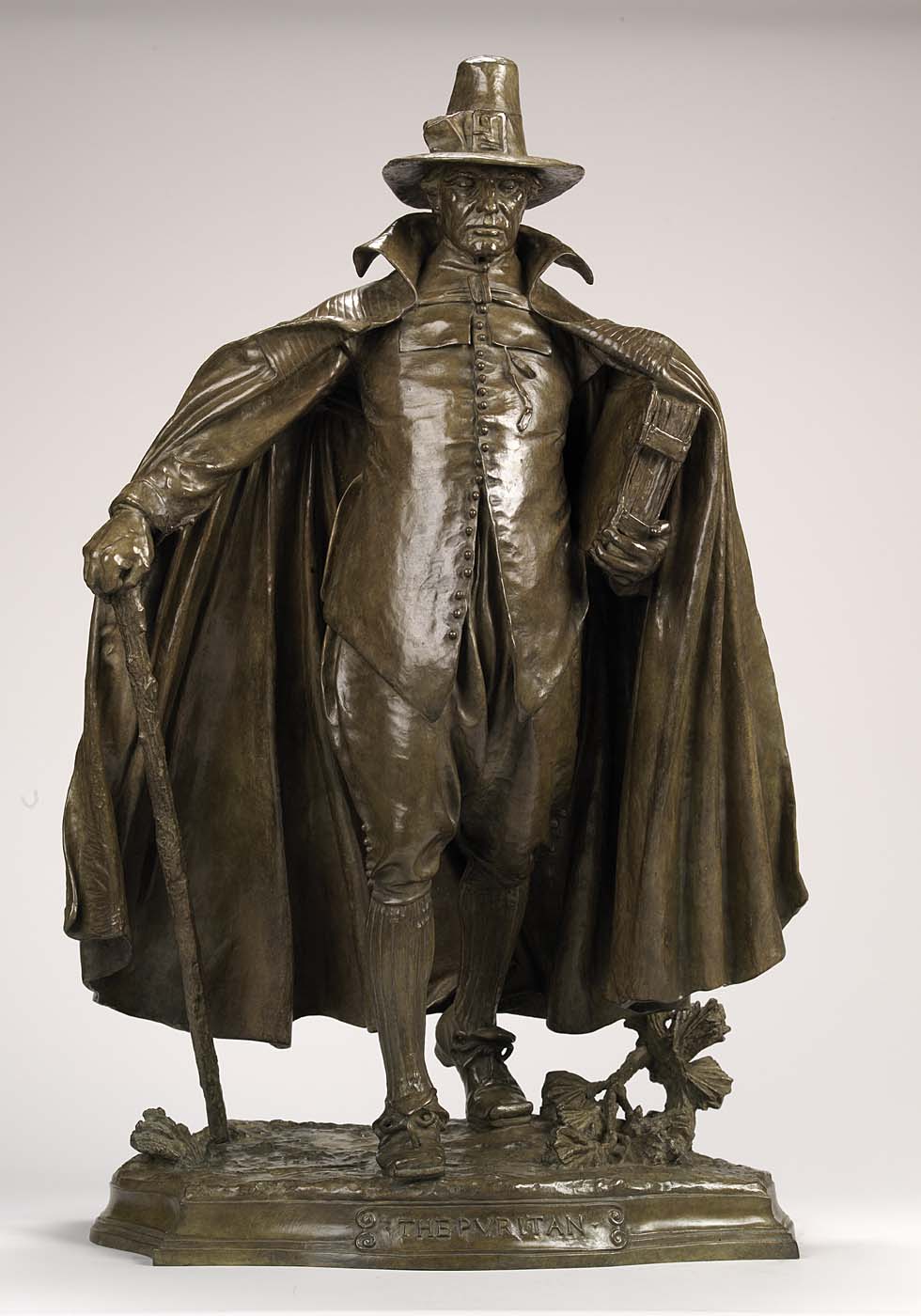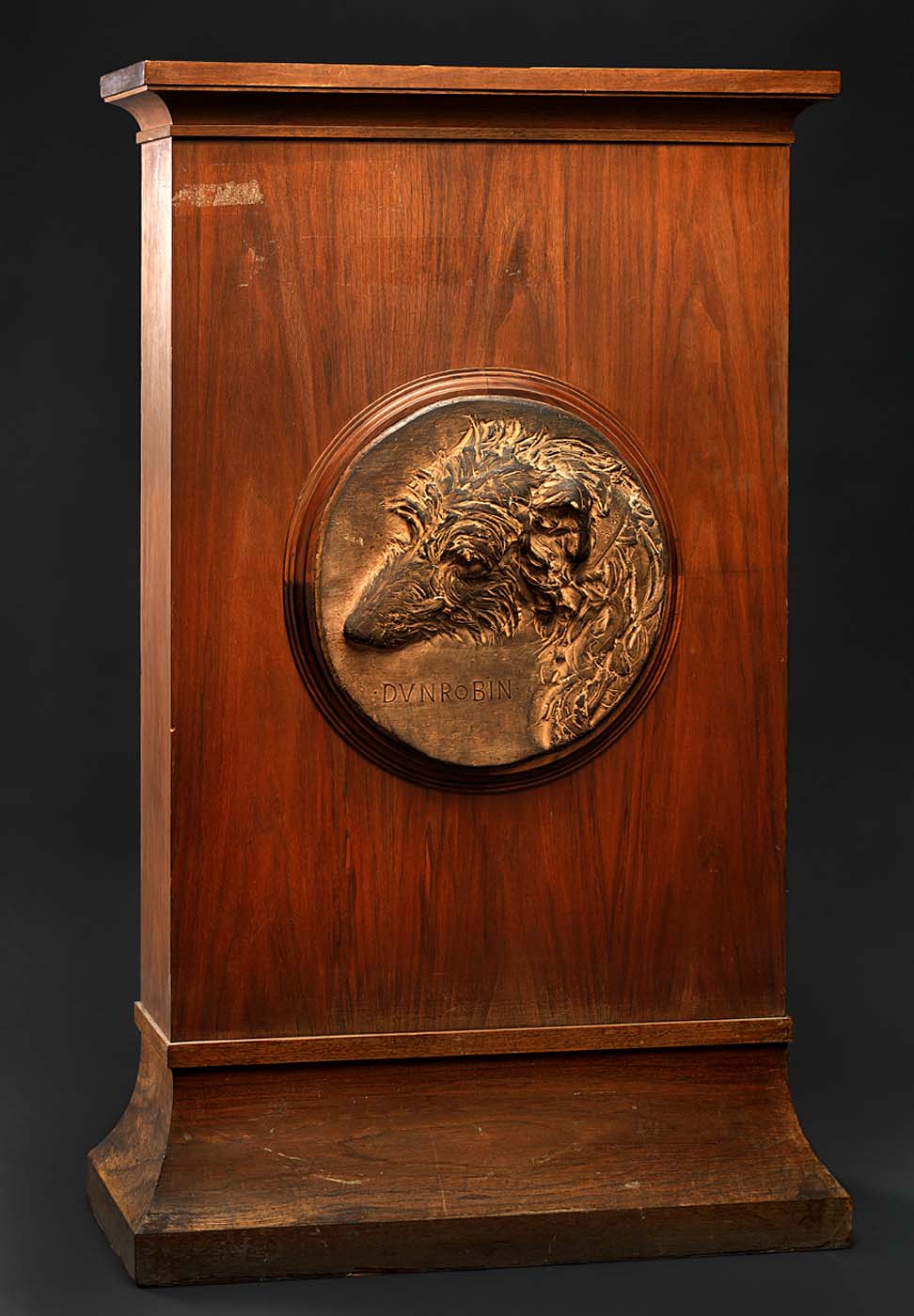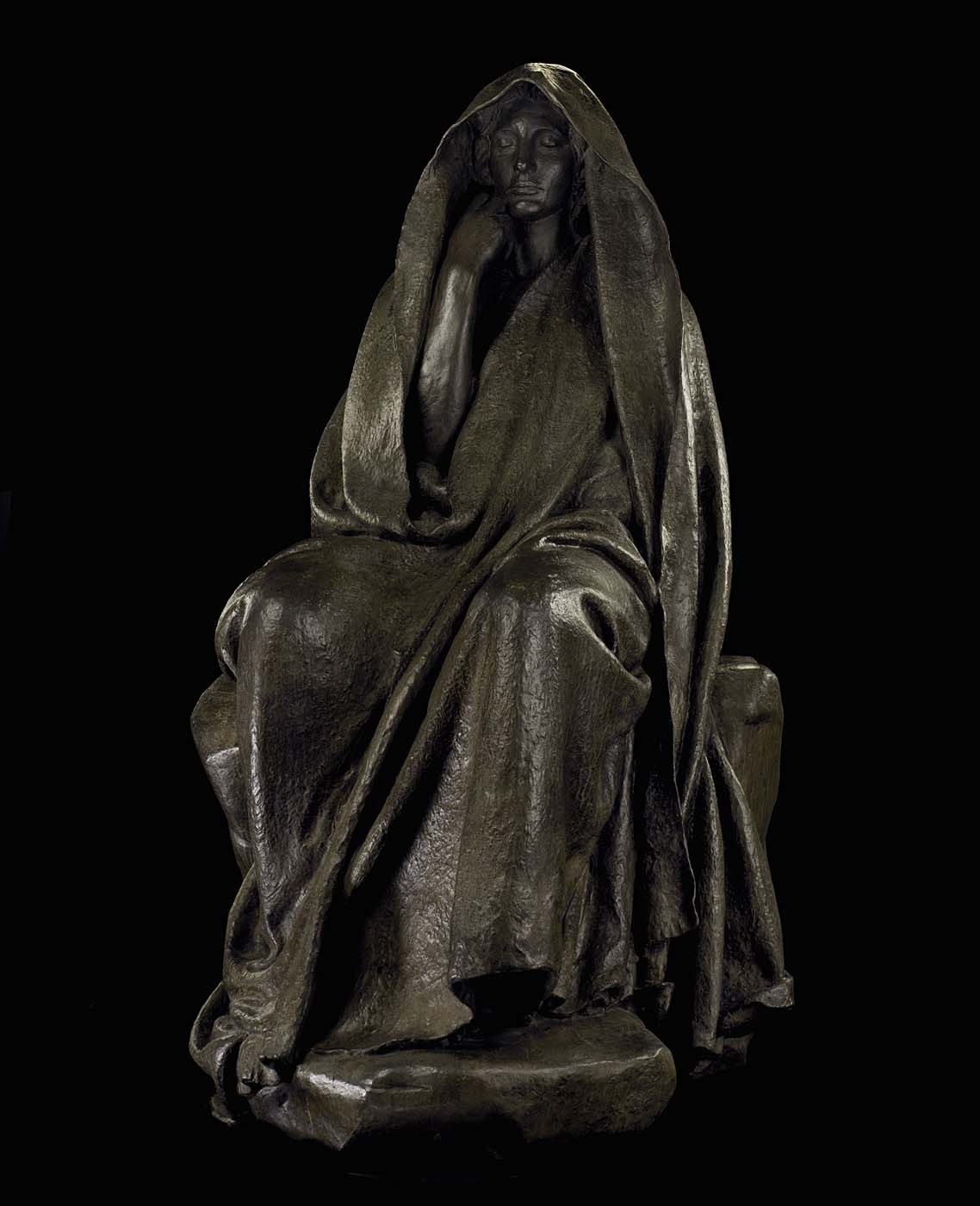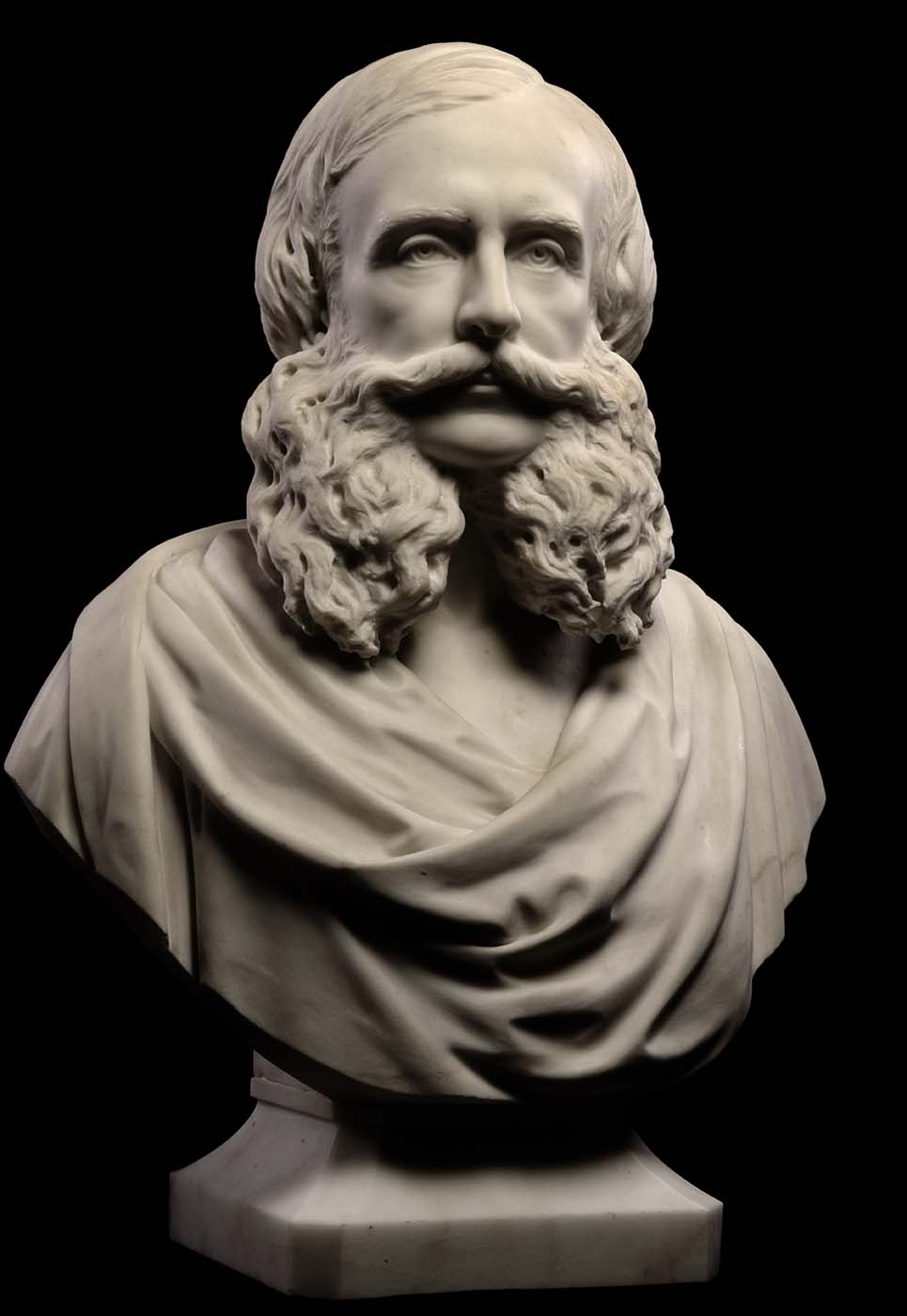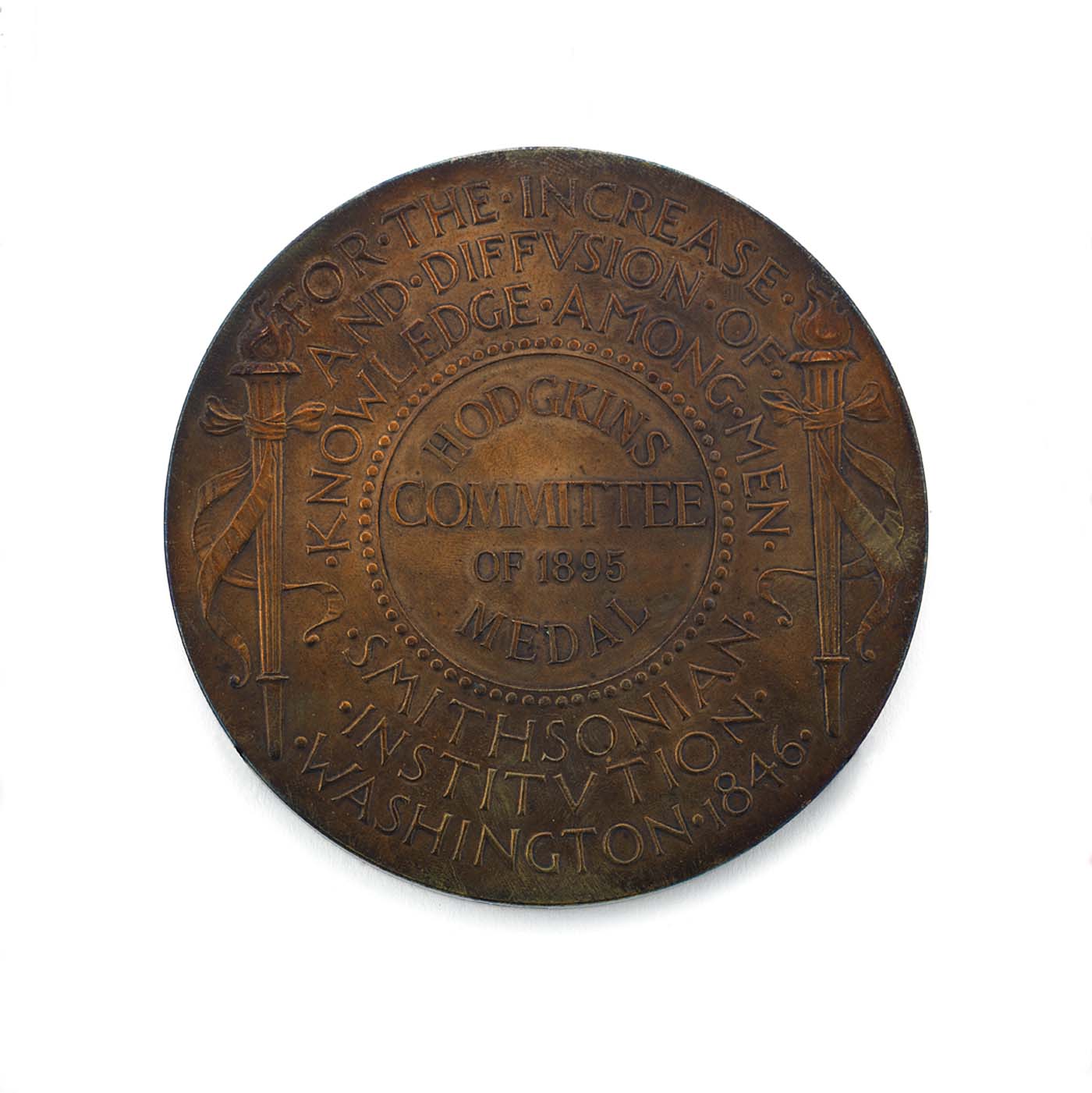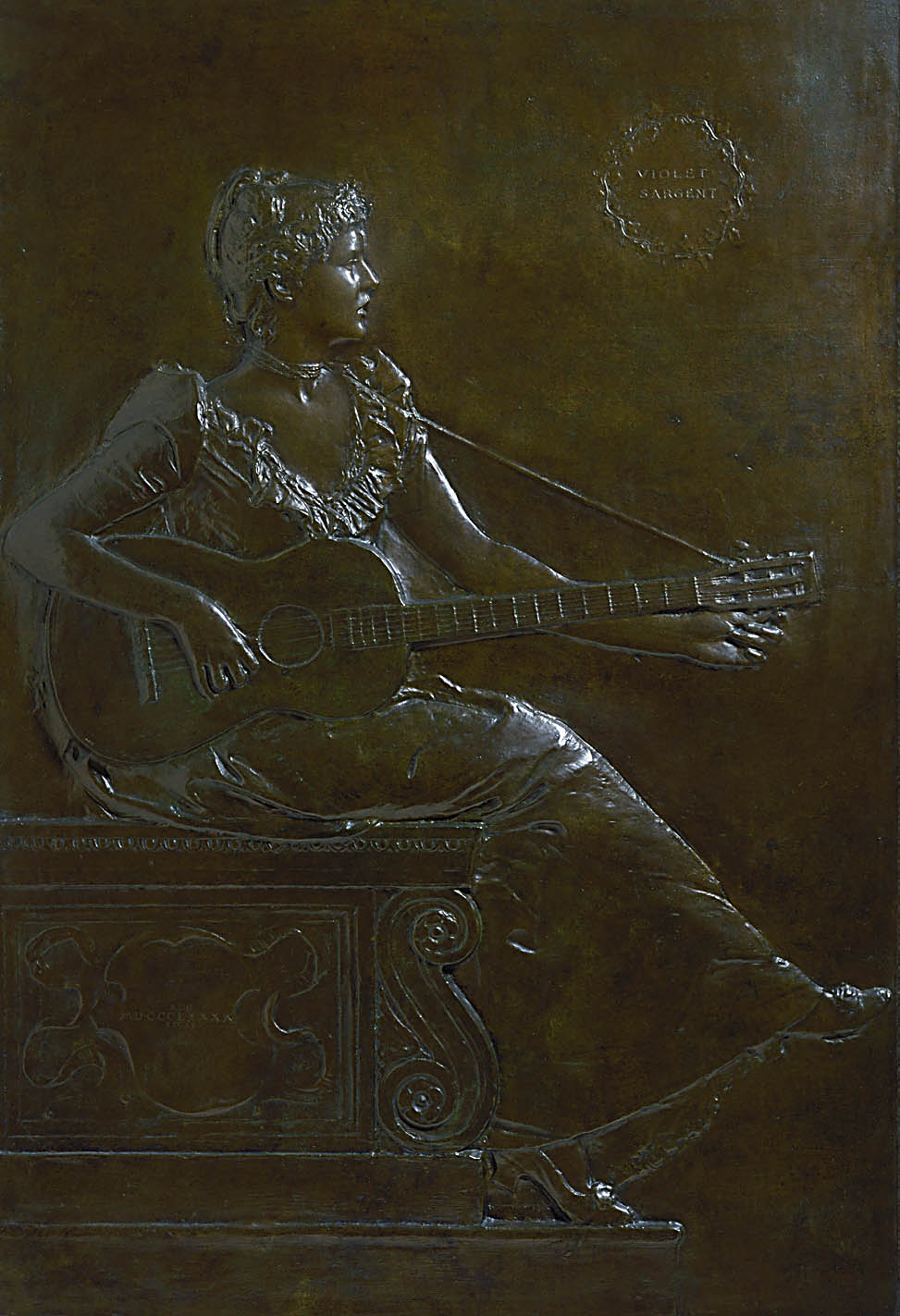Augustus Saint-Gaudens
Born 1 March 1848, Dublin, Ireland, of a French father and Irish mother; September, due to Potato Famine, family emigrated to U.S., settling in New York. 1861, apprenticed to a French stone cameo-cutter in New York, then to a shell cameo-cutter until 1867. During this period, took drawing classes at Cooper Union and National Academy of Design, New York. February 1867, to France to see Paris Exposition. 1868, entered École des Beaux-Arts as a pupil of François Jouffroy; supported himself as a cameo-cutter. 1870, due to Franco-Prussian War, left Paris for Rome, where he lived for five years.
1875, returned to U.S. following severe illness. Worked briefly as mural painter under John La Farge. Became friends with architects Stanford White and Charles McKim, through whom he received important commissions. 1876, commission for Admiral Farragut Monument for Madison Square, New York (plaster exhibited 1880, Paris Salon, honorable mention). 1877, founder of Society of American Artists; married Augusta F. Homer; settled in Paris until 1880.
Returned to U.S.; established studio in New York and, in 1885, in Cornish, N.H. 1888–97, taught at Art Students League, New York. 1891, completed Adams Monument, Rock Creek Cemetery, Washington, D.C.; 1892, Diana for Madison Square Garden Tower. 1897, unveiled General John A. Logan (Chicago) and Shaw Memorial (Boston).
1897–1900, lived and worked in France. 1900, Grand Prix, Paris Salon; diagnosed as having cancer; returned to U.S. 1901, Gold Medal of Honor, Pan-American Exposition, Buffalo. 1904, Gold Medal of Honor, Universal Exposition, St. Louis. Elected member of Royal Academy, London, and French Legion of Honor. 1904, fire destroyed studio at Cornish. Died 3 August 1907, Cornish, N.H.
The sculpture collection of the NMAA includes eleven works by Saint-Gaudens, certainly the most famous American sculptor of his generation.
William Kloss Treasures from the National Museum of American Art (Washington, D.C. and London: National Museum of American Art with the Smithsonian Institution Press, 1985
